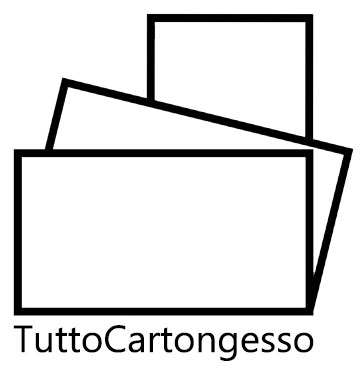Plasterboard for outdoors
The increasingly widespread use of plasterboard in modern building is due to its extreme versatility and its ability to constitute an excellent solution for any eventuality.
These characteristics over time have led to the need to find a material that is equally performing even for outdoor work.
Abandoning the "old" brick is now necessary.
Features
The outdoor slabs must be able to not be subjected to atmospheric agents and therefore must not be altered by the presence of humidity or by direct contact with water.
This is why the basic composition of these slabs is given by sand, cement and volcanic grit (suitably additivated) which are enclosed between two 4mmx4mm narrow-mesh glass fiber nets and in turn cemented with cement.
This cementitious structure of the slabs ensures that the product has a good impact and compression resistance.
Use of outdoor slabs
This type of fiber cement slabs is used in all those "outdoor" works such as curtain walls, the construction of external perimeter walls, the creation of ventilated facades.
The great flexibility of this product also allows extremely precise works such as the renovation of the balconies on the damaged parts or the restoration of the flues.
Advantages of fiber cement slabs
• Performing: the characteristics described above make the product easy to work with and suitable for any type of intervention.
• Read: moving these slabs on site is very easy. Their lightness makes them useful even in jobs in complicated areas.
• Negotiable: despite the cement-based composition, they are simply cut with a cutter.
• Resistant: the "plasterboard for outdoor" slabs have a high mechanical resistance that makes them resistant to compression, bending and suitable for holding suspended loads.
• Transformable: fiber cement slabs can be covered with other materials such as tiles, resins, ... thus creating various aesthetic effects.
• Economical: within the reach of any wallet, they are also suitable for sale in DIY stores or DIY stores.
Installation
The installation of outdoor plasterboard provides the same laying technique as for the classic plasterboard.
Obviously there are some tricks to follow to carry out a work in accordance with that has no unpleasant surprises with the passage of time.
1. First of all, you will have to create the classic structure on which the fiber cement slabs will be fixed.
NB: The metal profiles must be fixed according to a very precise scheme dictated by the manufacturers and must necessarily be in "Aluzink" or have at least one treatment that makes them resistant to external corrosive agents.
2. The cement-based slabs must be fixed to the structure previously created using special screws with "Ruspert" treatment that make them suitable for outdoor use.
NB: the assembly of the slabs must be done by strategically positioning them and creating expansion joints that allow them to "accommodate" the physiological movement due to the thermal expansion of the profiles. In fact the latter with the heat of the sun tend to increase their volume and, at low temperatures, on the contrary, they may undergo shrinkage. This "accordion" movement should be favored otherwise it would result in slabs screwed to the structure of non-repairable tears.
3. The slabs must be "joined" to each other by means of a special fiberglass mesh for joint covers.
Note: the joint cover net must be made of alkali-resistant fiberglass.
4. The constructed façade must be fortified by an armor composed of a fiberglass mesh that will be subsequently shaved to make it uniform.
NB: the fiberglass mesh is commercially available in rolls of 1.00 m in height and 50.00 m in length with a tight 4mm mesh for 4mm. At the ends of the roll there are usually lines that indicate where the net is to be surmounted (or superimposed).
However, for the sake of calculation, many operators prefer the 1.10 m high network.
5. To complete the work it is possible to finish the facade with an external decorative element (marble, tiles, ...) or simply with a quartz or a painting.
Want to learn more about the subject?
Search for items via TAGS!
Did this information help you?
Share them with whomever you want on social media.
